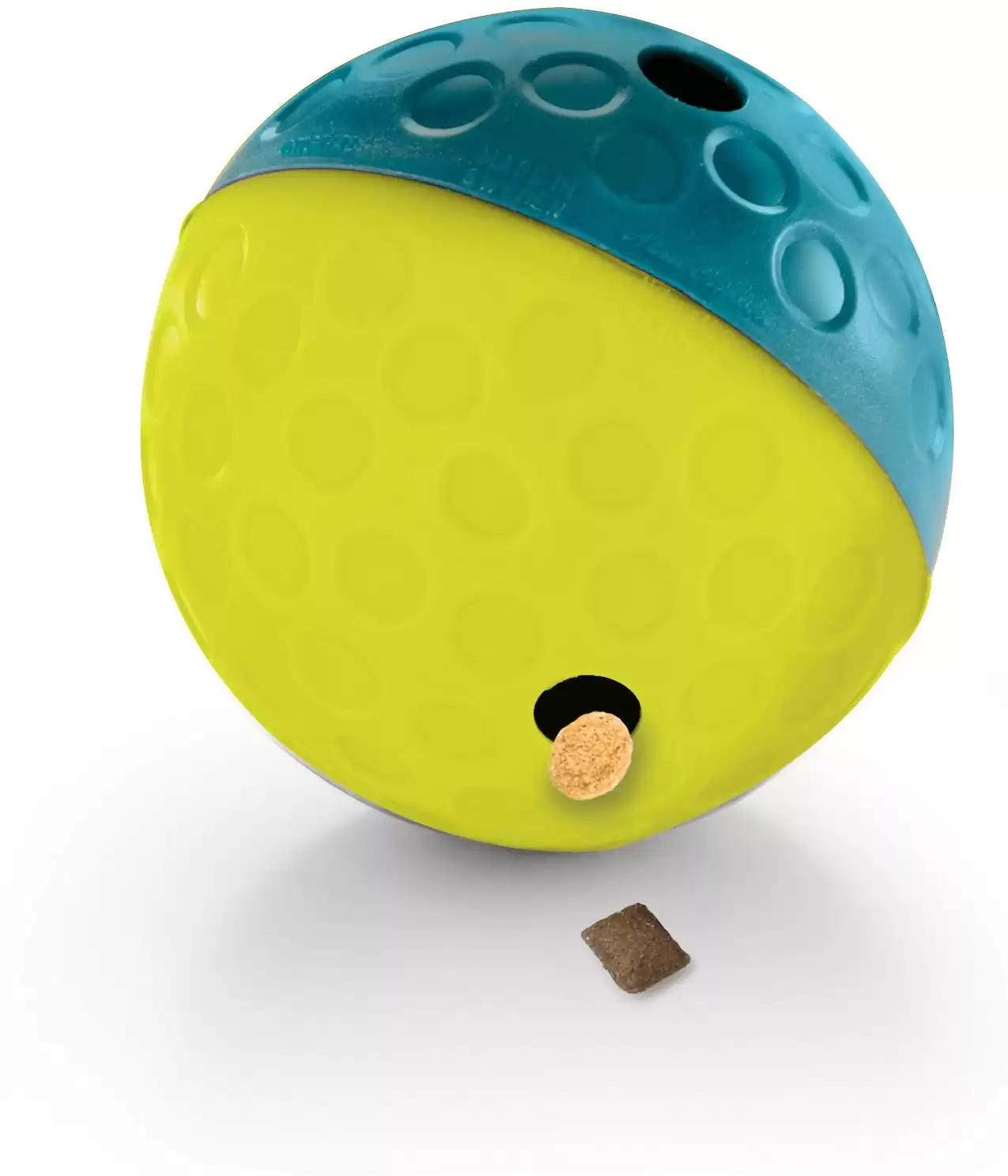It’s a delicious sweet treat that we humans love. We even give chocolate as a gift at special times of the year. Yet, for our dogs, it is a highly toxic and dangerous substance. So, why is chocolate bad for dogs? Here we explain the science behind this household hazard and give you some tips on how to stop your pooch from getting at your chocolate stash!
Why Is Chocolate Bad for Dogs?
There are two ingredients in chocolate that make it bad for dogs. They are called theobromine and caffeine. Both of these chemicals are diuretics (they make the body lose water), heart stimulants (they speed up the heart) blood vessel dilators (they open up the blood vessels), and smooth muscle relaxants.
They have the same effect on the human body. The difference is that our bodies can break down these chemicals quickly and get rid of them. A dog’s body is really bad at breaking them down, so they hang around in the bloodstream for days and this causes a huge challenge to the organs.
Also, some sugar-free chocolate contains an artificial sweetener called xylitol. This can make a dog’s blood sugar level drop so low that it causes liver failure.
How Much Chocolate Is Toxic For Dogs?
This is where things can get a little confusing. You may have heard tales from your friends claiming that their dog ate some chocolate and was perfectly fine. This is entirely possible. The severity of a dog’s illness will depend on the type of chocolate that they ate, the quantity of chocolate ingested and the size and age of the dog. Experts also suspect that some dogs are genetically more likely to suffer serious illness after eating chocolate than others.
As you would expect, larger dogs can handle more chocolate than smaller dogs. Also, dogs with pre-existing health conditions can be more vulnerable. There are several online toxicity calculators that can help you work out how the chocolate will affect your dog. However, there is no substitute for direct consultation with your vet.
We’ve put together a handy table of some common chocolate products and the amount of theobromine they contain.
| Type of chocolate | Approximate Theobromine content |
|---|---|
| Cocoa | 20.3 mg/g |
| Baking chocolate | 13 mg/g |
| Dark confectionary chocolate | 4.41 mg/g |
| Milk confectionary chocolate | 1.88 mg/g |
| Chocolate cupcakes | 1.5 mg/g |
| Chocolate ice cream | 0.62 mg/g |
| White chocolate | Very small amounts |
Cocoa shell mulch is very high in theobromine and should not be used in your garden if you have a dog.
Clinical Signs of Chocolate Poisoning in Dogs
Dogs usually become unwell within 6 to 12 hours of eating chocolate and the symptoms can last for up to three days. It usually starts with your dog vomiting but here is a complete list of the possible signs:
- Vomiting (being sick)
- Diarrhea (frequent and liquid poops)
- Stomach pain
- Excessive drooling
- Loss of co-ordination
- Appearing restless (theobromine is a stimulant)
- Panting
- Peeing more often
- Increased thirst
- Fast heartbeat
- Fast breathing rate
- Muscle tremors – shaking
- Seizures
- Aspiration pneumonia from inhaling vomit
- Eventual collapse with heart failure
Sadly, some dogs die after eating chocolate. Senior dogs and those with existing heart problems are most likely to have a poor outcome.
How to Prevent Your Dog From Eating Chocolate
Dogs don’t understand that chocolate is bad for them and will gobble it up if they get the chance. So, it is your responsibility to prevent this from happening. Here are some hacks to keep your dog safe.
Identify the Riskiest Times
There are some times of the year when we tend to have more chocolate in our homes. Christmas, Easter, and birthdays are typical examples. These are also the times when there are more people in the home, things are a little chaotic and you are not watching the dog so closely. Dogs are opportunists and this is exactly when they are most likely to eat something that they should not. Dogs are four times more likely to end up at the vet with chocolate poisoning at Christmas than at any other time of the year!
Try to be vigilant and place advent calendars, easter eggs, and chocolate coins out of reach of the dog. Easter egg hunts can be especially risky because the dog is always going to reach the chocolates before the kids do – their amazing sense of smell gives them a head start! Lock your dog away whilst the hunt is on and count all the eggs so you can be sure they have all been found before letting your dog out.
Don’t Rely on Wrappers
Wrappers, advent calendar boxes, easter egg boxes, and gift wrapping will NOT keep a dog out. Wrapped chocolate gifts should not be left under the tree at Christmas. Coins cannot be hung from the low branches of the Christmas tree either.
The wrappers could actually present even more of a danger. They are not usually poisonous, but they can cause a blockage in your dog’s intestine. You could always prevent your dog from getting access to the tree using a dog barrier.
- The fence is a wireless barrier
- Covers a 1/2 acre of space
- Very easy setup
- System is fully portable
Store Chocolate Where Dogs Cannot Reach
This may seem obvious, but you will be surprised where a determined dog can get to. Dogs have stolen chocolate from countertops, pockets, handbags, and from inside cars. Make sure that everyone in your home is aware that your dog cannot have chocolate and gets in the habit of hiding it away.
Crate Train Your Dog
If you are having issues with your dog pinching food from countertops or even out of children’s hands, it is time to crate train them. When your pooch is not being closely supervised, it will be safely locked away in its crate. You can use a Kong or similar interactive toy to keep them amused.
- Keep the dog entertained and mentally stimulated
- Develop the puppy's problem-solving skills
- Very easy to clean
- Made from food-safe material
Teach The ‘Leave it’ Command
This is an often-overlooked command yet it can literally save a dog’s life. Using a low-value treat (e.g. kibble) and a high-value treat, teach your dog that if they obey the ‘leave it’ command they get a fabulous treat. There are plenty of training guides that will work you through this step by step.
Be Vigilant on Walks
Dogs that scavenge in gutters often find discarded chocolate bars and have swallowed them before you have a chance to intervene. Eating things from gutters and sidewalks is not a good habit for a dog to get into. You may need to use a head halter to control their head whilst you are on walks until they learn the ‘leave it’ command.
- Perfect for dogs that are pulling very badly on the leash
- Provides immediate correction
- Comfortable and easy to put on
- Recommended by vets
What to Do if Your Dog Eats Chocolate
If your dog eats chocolate, you must contact your vet right away. Your vet will need to work out how serious this situation is and to do that, they will need some vital information from you. Have this information ready before you make the call.
- Your dog’s age and breed
- Your dog’s weight
- The type of chocolate that your dog has eaten
- The ingredients (you should be able to get this from the packaging)
- How long ago the chocolate was eaten
- If your dog also swallowed the wrapper
- Any symptoms that your dog is currently experiencing
You will probably need to then take your dog to veterinary surgery right away. If your dog is already experiencing symptoms, head off to the vet immediately and have someone call ahead so they know that you are on the way. Do NOT try to make your dog vomit yourself as this can make the situation worse.
The treatment that the vet gives your dog will depend on your dog’s symptoms, their weight, and how much chocolate they have ingested. In mild cases where a large dog has ingested a tiny amount of chocolate, they may simply monitor them. Vets may also give your dog something to make them vomit – this needs to be done within two hours of eating the chocolate. They can also give activated charcoal, which soaks up the toxins in the intestines so that the body can expel them without absorbing them.
In severe poisonings, your dog may need IV fluids and treatment for seizures. They may also need medication to control their heart rate. In the recovery phase, your dog may need a special gastro-intestinal support food that is gentle on their stomach.
The photo featured at the top of this post is © Armadillo Stock/Shutterstock.com
Ready to discover the top 10 cutest dog breeds in the entire world?
How about the fastest dogs, the largest dogs and those that are -- quite frankly -- just the kindest dogs on the planet? Each day, AZ Animals sends out lists just like this to our thousands of email subscribers. And the best part? It's FREE. Join today by entering your email below.
FAQs (Frequently Asked Questions)
Are there long-term effects when a dog eats chocolate?
No, with appropriate treatment the effects of chocolate poisoning should only last for a few days. Provided your dog survives this acute period, it should be fine. However, in rare cases, a dog can be left with permanent brain damage. This is caused by the numerous seizures triggered by the chocolate.
Also, there can be long-term effects if your dog regularly eats small quantities of chocolate. This may not be enough to make them acutely ill but it may affect their heart in the long run.
Is white chocolate bad for dogs?
White chocolate is the safest of all the types of chocolate because it contains so little theobromine. That does not mean that it is safe to give to dogs. White chocolate contains a lot of fat and this can trigger pancreatitis in dogs which is both painful and dangerous.
Is there a safe chocolate for dogs?
Yes – but it is not really chocolate at all. Some dog treats that are described as or look like ‘chocolate’ actually contain carob. This is a cocoa powder alternative obtained from the carob tree. It has an earthy taste that is similar to chocolate but it is not toxic to dogs.
Thank you for reading! Have some feedback for us? Contact the AZ Animals editorial team.









